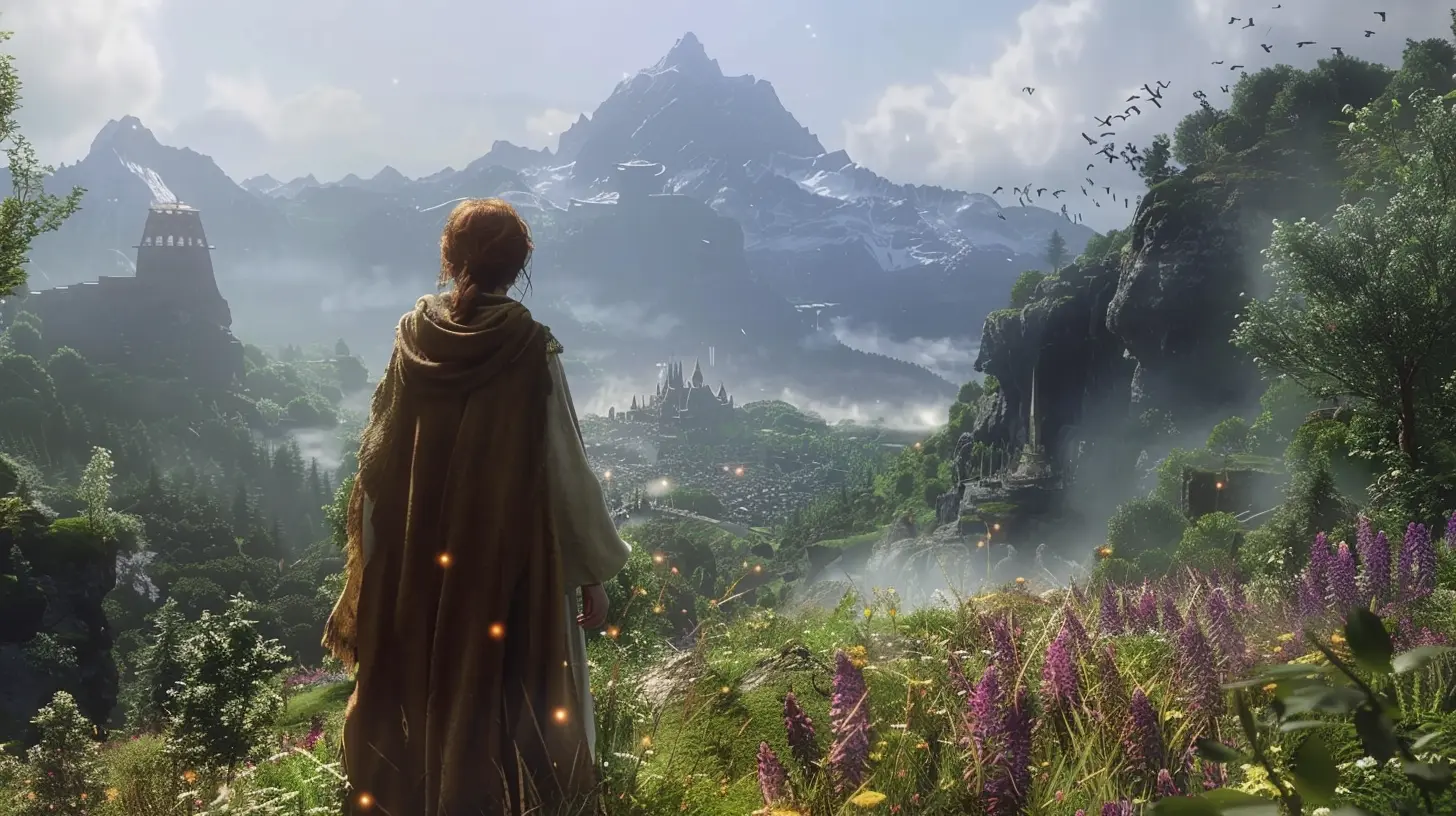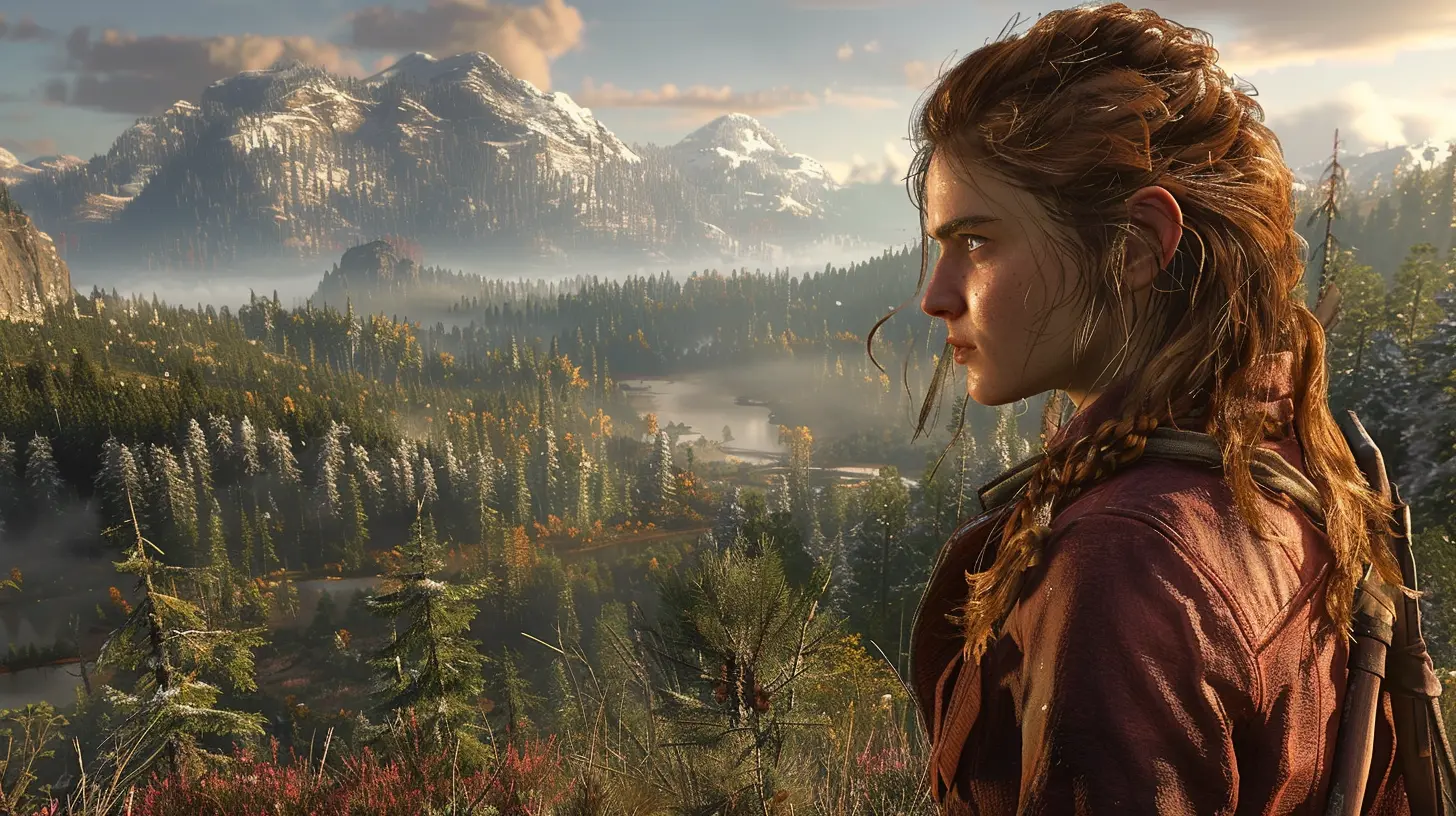Exploring the Challenges of Voice Acting in Open-World Games
28 June 2025
Voice acting can make or break a video game. When it’s done right, it immerses us, makes characters feel real, and adds emotional depth. When it’s off? Well, it can yank us right out of the game faster than a jump-scare in a horror title. Now, imagine that pressure—multiplied by the sheer scale of open-world games.
Open-world games are a different beast altogether. They come with massive maps, hundreds (if not thousands) of characters, and quests that twist and turn in unpredictable ways. Bringing all that to life with voice acting? It’s no small feat. In fact, it’s an art and science rolled into one. So today, let's talk about the rollercoaster ride of voice acting in open-world games—the struggles, the surprises, the behind-the-scenes magic, and yes, the beautiful chaos.
The Immense Scope of Open-World Games
Before we dive into voice acting specifically, let’s take a moment to appreciate how massive open-world games really are. Games like The Witcher 3, Red Dead Redemption 2, Skyrim, and Cyberpunk 2077 are essentially living, breathing worlds.These aren’t just static environments either. They’re dynamic and ever-changing. NPCs go about their routines, players can approach quests in unpredictable ways, and nothing is truly linear. So, here’s the question: how do voice actors even begin to cover all this ground?
A Never-Ending Script? The Content Mountain
One of the biggest hurdles is the sheer volume of dialogue. In traditional, linear games, the narrative flows from A to B. But open-world games? They’re more like an alphabet soup. Dialogue has to account for multiple paths, moral choices, and optional encounters.A single character might need dozens of different voice lines depending on how a player interacts with them. Friendly approach? One reaction. Threaten them? Completely different tone. Ignore them? Well, even silence might need a voice line!
And multiply that by hundreds of characters. That turns into hundreds of thousands of spoken words. It’s no wonder some voice actors spend months—even years—on these projects.
Consistency Is Key (And Really, Really Hard)
Imagine trying to maintain the same voice, pitch, and emotion over the course of a two-year recording schedule. That’s the reality for most voice actors in open-world games.Let’s say you recorded a sad scene today. Fast forward eight months and now you’re recording a scene that’s technically before the sad scene in the game’s timeline. You’ve got to remember how the character felt emotionally and vocally back then. It’s a delicate dance.
This is where voice directors come in. They’re basically the compass that keeps actors on track, making sure the tone fits, the emotion is accurate, and the story remains coherent. Without them? It's like trying to write a novel where every page was written a year apart—pure chaos.
Player Choice Creates Dialogue Chaos
Here’s where things get real tricky. Open-world games thrive on choice. Want to be the hero? Great. Prefer to go full villain mode? Totally fine. But every choice means different lines, different emotions, and different consequences.This branching narrative forces voice actors to record multiple versions of the same conversation. One cheerful, one neutral, one angry—it’s like creating a choose-your-own-adventure book, but with your voice. And all those layers of dialogue have to blend smoothly, no matter the player’s path.
It’s not just hard creatively—it’s mentally exhausting. Imagine switching between kindness and cruelty over and over in the same session. It’s acting whiplash.
Accents, Emotions, and Authenticity
Another huge challenge? Staying authentic. Players today are demanding. They expect accents to be accurate, emotions to be heartfelt, and characters to feel real. If a medieval knight sounds like he's from modern-day L.A., you’re gonna hear about it in the Reddit threads.Voice actors often have to learn new dialects or practice speaking in a tone that matches the character’s culture and personality. And with fantasy or sci-fi games, you're sometimes voicing non-human characters. So, how do you sound like an alien queen or a talking tree? That’s the magic of voice acting.
Still, it’s not just about sounding “cool.” There’s nuance involved. A character might be angry, but are they loudly furious or quietly seething? That difference matters—a lot.
The Struggle of Non-Linear Storytelling
Open-world games don’t hold your hand. Players can approach things in any order. Side quests before main quests? Sure. Final boss first? If the game allows it, why not?This non-linear experience means voice actors can’t rely on building emotion step-by-step. One scene might be an emotional climax, but for some players, it could be the first thing they do in the game.
That puts extra pressure on the delivery. You can’t assume the player knows the backstory yet. Every line has to stand on its own, offering depth without assuming emotional buildup.
Technical Limitations Meet Artistic Vision
Let’s not forget the tech side. Open-world games are huge, and that leads to certain constraints.Voice lines often need to be delivered in a way that works with game systems. For instance, characters might shout the same warning over and over during combat. It’s immersive… until you hear “Get him!” for the fiftieth time.
To combat this, developers and actors have to record variations of combat barks, idle chatter, and ambient dialogue. This kind of “background voice acting” might seem less glamorous, but it’s vital. These voice bits are the glue holding the world together.
Localization: A Whole New Layer of Complexity
Open-world games go global. That means every piece of spoken dialogue has to be translated and re-recorded in multiple languages.Now think about this: it’s more than just translating words. Certain jokes, cultural references, and idioms don’t work in other languages. Voice actors and localization teams have to adapt while keeping the integrity of the character intact.
And sometimes, the localization voice actors don’t get the full context. They might record a line without knowing what scene it belongs to. That can lead to emotional mismatches or awkward deliveries—not their fault, but still a challenge.
The Human Side of Voice Acting
We often see the final product—clean, polished, and immersive. But behind every line is a real person sitting in a booth, bringing someone else's world to life with nothing but their voice.Voice acting is grueling. Long hours, vocal strain, and emotional exhaustion are all part of the job. Some roles even push actors to the point of physical injury—especially when screaming or using gravelly voices.
And yet, these performers bring everything they’ve got. They cry, laugh, scream, and whisper—all so we can feel connected to a digital world.
AI Voices: Helpful Tool or Job Threat?
With the rise of AI-generated voice tools, there’s been some buzz (and concern) about the future of voice acting. Some developers are experimenting with AI to fill in minor dialogue or placeholder audio.But here’s the deal: AI can’t replicate emotion. Not the way a human can. It can create sound, sure, but can it inject soul into a character? Not even close.
Still, it’s something the industry is watching closely. Voice actors are pushing for better protections and clearer contracts to ensure their work isn’t used without consent.
The Unsung Heroes of Immersion
When we talk about what makes open-world games great, people usually mention the graphics, the combat, or the story. But voice acting? Often flies under the radar, despite being one of the strongest emotional threads.Think of your favorite game moments. Chances are, they hit home because of the way a voice actor delivered that one gut-punch line. Or made you laugh with just the right timing. Or whispered a warning that gave you chills.
Voice actors are the unsung heroes that give life to the world. Without them, it’s just pixels and code.
Final Thoughts: It's Not Just Reading Lines
Voice acting in open-world games is storytelling in its rawest form. It’s not just about reading lines into a mic. It’s about becoming someone else entirely—and doing it over and over in a world that never follows a straight path.The challenges are big. The hours are long. And the expectations are sky-high. But when it’s done right? It elevates an open-world game from “good” to “legendary.”
So, the next time you're lost in an epic fantasy world or a gritty cyberpunk city, take a moment to appreciate the voices guiding you. Because someone, somewhere, poured their soul into making that world feel real for you.
all images in this post were generated using AI tools
Category:
Voice Acting In GamesAuthor:

Whitman Adams
Discussion
rate this article
2 comments
Liv McKee
Voice acting in open-world games is like trying to shout over a dragon while ordering a pizza—good luck keeping your character's emotions straight! 🍕🐉
September 21, 2025 at 4:11 AM

Whitman Adams
Absolutely! Balancing character emotions amidst the chaos of an open world is a unique challenge for voice actors, often requiring them to deliver nuanced performances despite the distractions.
Hope Sanders
Fascinating topic! How do different choices impact immersion?
July 2, 2025 at 2:42 PM

Whitman Adams
Thank you! Different choices can significantly affect immersion by altering player experience and emotional connection, making each decision feel impactful within the game world.


